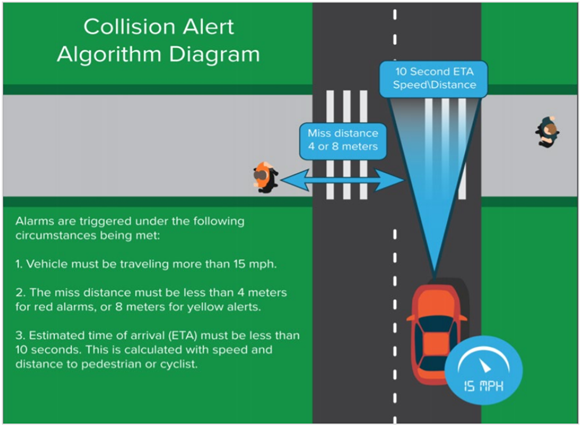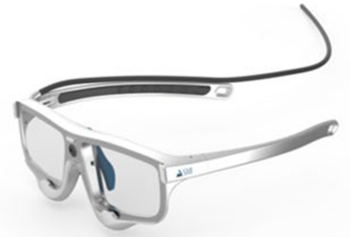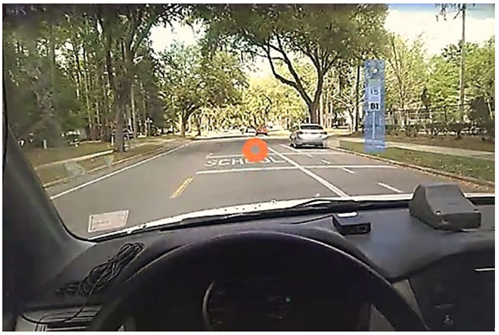Florida Department of Transportation ranks safety as a top priority for the state, and it is listed as one of FDOT’s Vital Few focus areas. Despite the vision of having fatality-free roadways, crashes are still a reality today. The Florida Department of Highway Safety and Motor Vehicles noted an increase of total annual traffic crashes in 2018 compared to the previous three years.
Two particularly vulnerable populations when it comes to transportation safety are pedestrians and bicyclists – more specifically, young pedestrians and bicyclists. Routes between home and school are a special focus for FDOT as they research and seek to implement strategies for roadway safety.
FDOT contracted Eakta Jain, Ph.D., an assistant professor in the Department of Computer & Information Science & Engineering at the University of Florida (UF), to serve as Principal Investigator, asking her to dive into this larger safety effort of using emerging technologies and state-of-the-art intelligence systems to analyze driver safety and speed compliance in school zones. This study took place at FDOT’s innovative I-STREET.
I-STREET 101
I-STREET (Implementing Solutions from Transportation Research and Evaluation of Emerging Technologies) is a multimodal network of roadways in Gainesville, Florida, spanning UF’s campus, the City of Gainesville, and Interstate 75. This initiative was developed to test connected and automated vehicle technologies, as well as communication measures between a vehicle, transportation user, and the surrounding roadway system.
So why was I-STREET chosen as the location for this school zone study? Because I-STREET, a set of existing roadways open to the public, is a true representation of the real world, as compared to a lab, and it provided strategic proximity to schools and, therefore, school zone beacons. This project was the first naturalistic field study to have been done on the I-STREET testbed.
MEASURING SPEED AND GAZE
The field study evaluated driver compliance along a 5.7-mile circuit with several school zones. Five beacons, or flashing lights, exist along the circuit – four located on the side of the road and one overhead. The research team also staged as bicyclists along the route. A total of 50 subjects participated in the study, each making two (2) trips around the circuit with a test vehicle and phone preloaded with a safety app.
The app alerted the drivers in the test vehicles if they exceeded a preset speed threshold in an active school zone. It also alerted them when pedestrians and bicyclists who also had the app installed were in proximity to the test vehicles. Drivers were split into three groups. All subjects drove with the app installed: the first group was a control group that did not receive audible alerts (i.e., the app was in stealth mode), while the second and third groups received audible-only alerts and audible plus visual alerts, respectively.

Source: Temple/AI, 2020, as cited in Jain, 2020
To measure the effectiveness of the app, the research team looked at vehicle trajectory data and driver attention data. In addition to alerting the driver, the phone-based safety app returned vehicle trajectory and speed data to the team. To allow the researchers to measure “gaze,” each subject driving the test vehicle wore eye-tracking glasses. Eye-tracking technology has been around for five or six decades now, Dr. Jain explains, “but only recently has it become reliable. There is no bulky helmet or uncomfortable lab equipment. It’s just like wearing a pair of sunglasses.” A pair of smart sunglasses, that is. This mobile eye-tracker records the driver’s view and eye movement.

Source: Jain, 2020
Dr. Jain describes the technology, saying, “Using eye-tracking technology in the context of safety research is new and interesting. It opens up a whole new way to understand the driver, tying in that behavioral analysis. Perhaps a vehicle slows down, but did it slow down because the driver paid attention to signage directing them to do so?” Dr. Ponnaluri adds, “It provides some insight to what drivers see and, therefore, do. Eye tracking helped us understand what level of attention is being paid upon entering the school zones, whether or not they see the signage.”

This research revealed that when the app was configured to give either audible or audible and visual alerts, the likelihood of speeding in activated school zones decreased. Without any alerts, the app reported speeding in 52.5% of the instances driving through a school zone. However, when a form of alert (audio or audio-visual) was in place, the app reported up to a 14.5% decrease in speeding through school zones.
Similarly, the eye-tracking data also suggested an increase of awareness and visual scanning when the app provided an alert. Drivers looking at a school beacon increased by 14% when audio-visual alerts were turned on. For the vehicle-bicycle detection, in cases where a cyclist was not expected, the percentage of trips where the driver looked at the cyclist increased 33% with an audio alert. These results show a driver behavioral response to having safety app with alerts turned on, whether audio or audio-visual. Though sample sizes were small, preliminary trends indicate that an app alert could increase the awareness of a driver toward certain roadside elements while in school zones.
DRIVING SAFETY OF THE FUTURE
Since completing the study in early 2020, Dr. Jain has reflected on limitations and lessons learned, saying, “Any good research raises more questions.” In this case, some of these questions revolve around continued analysis of human behavior while driving. “These are caveats of a first experiment. Our takeaways were related to the data we gathered. It would be interesting to illuminate human behavior, and ask how is a driver’s attention being allocated? If they did not look at the areas of interest we highlighted in our study, that is, beacons and cyclists, where do they look?” Similarly, Dr. Ponnaluri observes that it is easy to assume drivers are paying attention to signage, but that is not necessarily the case.
Overall, this study contributes to addressing a larger safety effort – how to reduce conflicts – with vehicles and vulnerable populations, like young bicyclists and pedestrians. “We can use these findings to guide how we invest in future infrastructure, like signage, intelligent systems, or other safety measures,” says Dr. Jain. Additionally, Dr. Jain suggests, “this research can help establish measures that warn drivers or initiate corrective action for safe driving.” Continued research of app-based technology can help to shape a future with increased driver awareness, safer school zones, and safer roads throughout the state and country.
This story originally appeared on UF Engineering.
Check out other stories on the UF AI Initiative.

